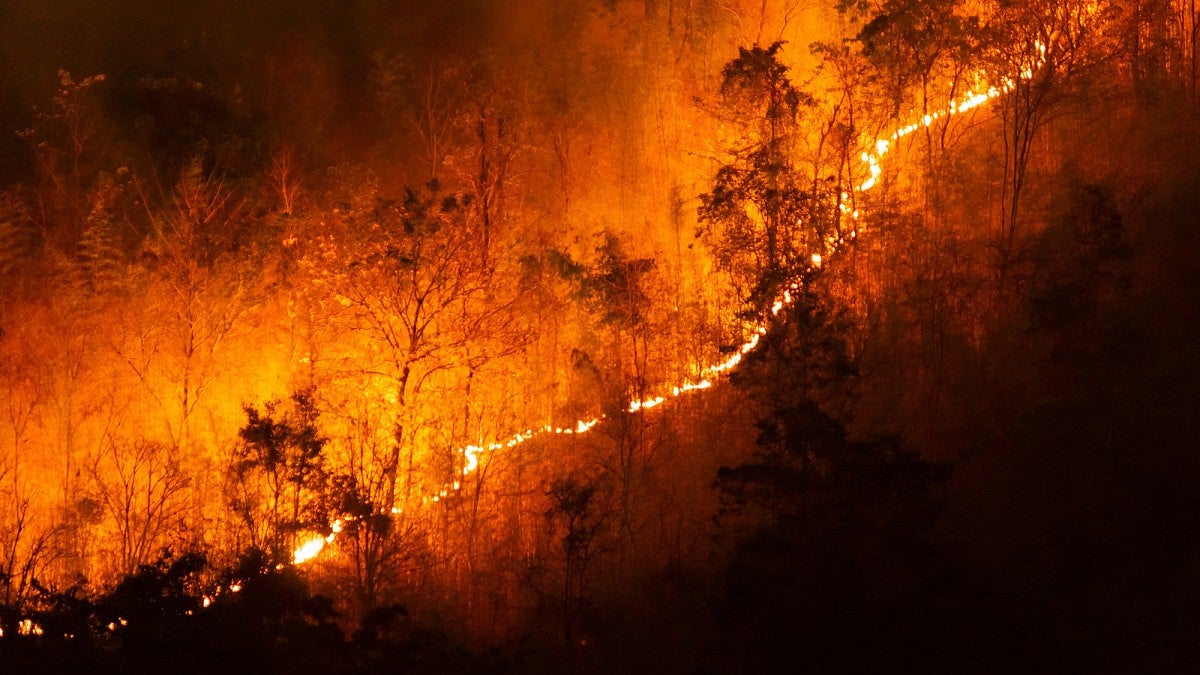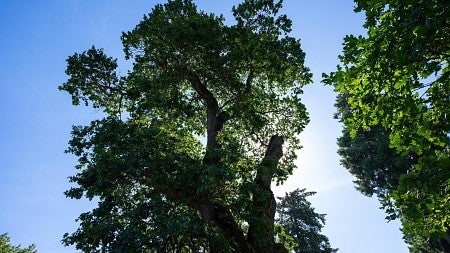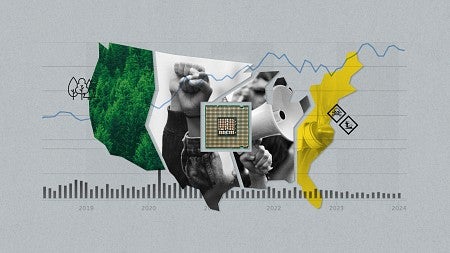
Burning Question
Do forest fires hurt public health? An economics student finds an answer, and a future
By Emily E. Smith • October 7, 2020
3 min read
Matthew Dodier always knew he wanted to work in international development or public policy. But early in his undergraduate years, his destination—and the path to get there—was unclear.
What was clear—at least to economics professor Ben Hansen—was that Dodier in 2014 displayed an impressive curiosity and work ethic in Hansen’s intermediate microeconomics course.
Hansen, whose work in applied microeconomics focuses on crime, health, and labor, is always searching for standout students to undertake research projects for academic and personal growth. He quickly recognized Dodier’s talent: “Matt was one of those students who was always attentive, interacted, and then would come to office hours and ask me more questions.”
Hansen enlisted Dodier’s help as a research assistant. Then, in 2015, Dodier was selected as a McNair Scholar, joining a federal program that prepares first-generation students with financial need and underrepresented students for doctoral studies. He was required to complete a research project of his own, and Hansen served as his mentor.
The topic emerged from Dodier’s interest in development economics and environmental economics: conducting research on how forest fires impact public health.
Wildfires in Oregon were particularly intense in 2014, and as Dodier and Hansen kicked around ideas related to air pollution, “the idea of looking at forest fires came up,” Hansen says. “That’s something that is salient to everybody, but nobody had studied the impact on hospitalizations or its impact on pollution.”
Dodier examined the effect of wildfire smoke on respiratory health. He collected statewide data on hospital admissions for respiratory problems, forest fire statistics from the Oregon Department of Forestry, unemployment numbers from the federal Bureau of Labor Statistics, population data from the National Cancer Institute, and land data from the US Department of Agriculture. He then looked at the origin, size, and location of forest fires and data on local particulate matter—or air pollution—to measure whether forest fires resulted in more pollution.
The research showed that the wildfire smoke emanating from forest fires indeed increased air pollution and caused hospitalizations to rise. That finding, Hansen says, “speaks to one of the potential costs of a warmer, drier climate where we have more of these fires. And more broadly, it speaks to the role of pollution affecting the health of the local population.”
The issue takes on new relevance as researchers examine the connection between air pollution and COVID-19. A recent study from Harvard, for example, found that Americans living in more polluted areas are more likely to die from the disease than those in less polluted regions.
The research was Dodier’s first taste of a complex, fast-moving project with tough deadlines. The first big hurdle Dodier encountered was accessing the wealth of data he needed in a short amount of time. Then came the arduous task of merging all those disparate datasets to measure the impact of forest fires.
“Some of it was just frustrating,” Dodier says. “It was really stressful, and it taught me to deal with that.”
It also ignited a passion that still burns in the 2016 graduate today, as a PhD candidate in public policy at Harvard Kennedy School.
Dodier now has a clear path: he’s set his sights on a career in academic research as a professor, perhaps not unlike Hansen, who helped Dodier discover where he could go with economics.
“I could talk to him about anything, not just econ,” Dodier says. “He was always encouraging and he gives real, honest feedback.”
Emily E. Smith, BA ’10 (women’s and gender studies, journalism: news-editorial), is a writer and editor in Bozeman, Montana.




